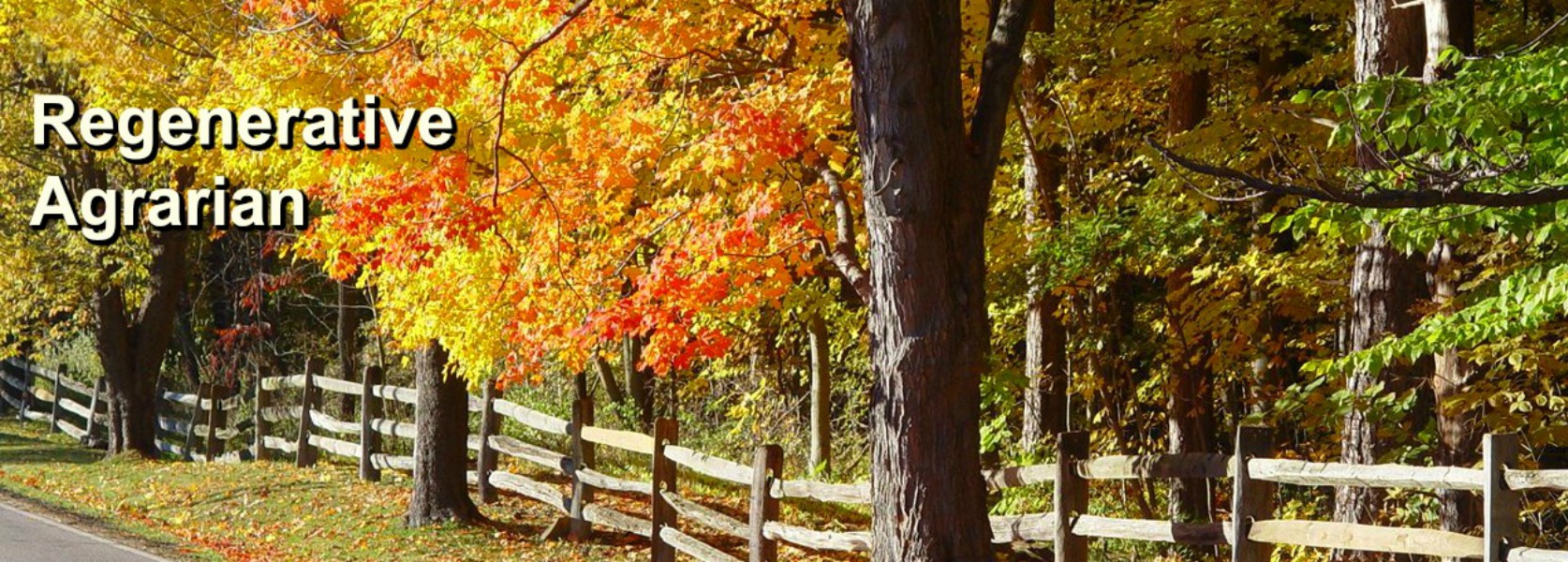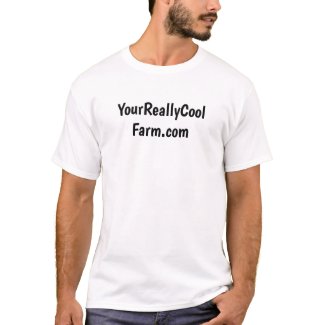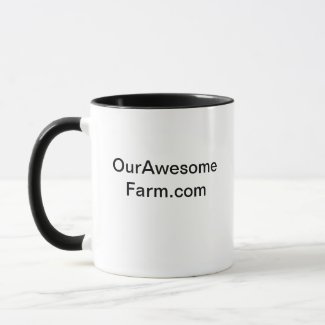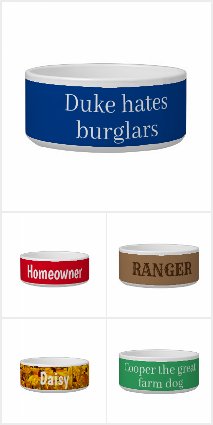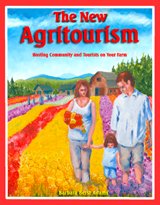The Maremma livestock guardian dog
First published in AcresUSA. by Barbara Berst Adams. Copyright National Lilac Publishing.
The Maremma is an Italian-bred livestock guardian dog (LGD) that has many owners quite enthusiastic about its abilities. Suzanne Willow and Lanita Witt own the 440-acre Willow-Witt Ranch in Oregon. “We have had Maremmas for 25 years,” said Suzanne Willow. “We haven't lost a goat since our first dog got here. We had been losing up to 10 a year (mostly young kids) before that to cougars and coyotes.” The ranch raises organically-fed pasture-raised Berkshire pigs, Alpine goats which graze from a 100-acre meadow, meat and egg chickens, and vegetables. They also offer agritourism which includes farmstays, various on-farm tours and outdoor pasture dining activities. The Maremmas fit in very well with their diversified operation.
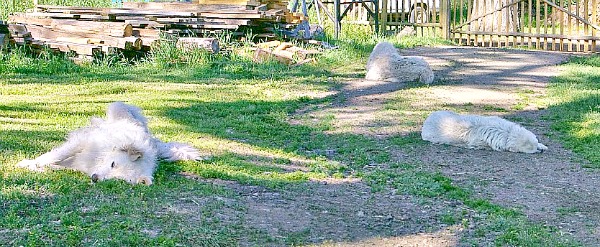 3 Maremma gaurd dogs rest in the shade. Don't let their docile looks fool you. Their radar is on and they'll jump to alert in a split second.
3 Maremma gaurd dogs rest in the shade. Don't let their docile looks fool you. Their radar is on and they'll jump to alert in a split second.This breed’s Italian name is “Maremmano-Abruzzese.” Its shortened American version, Maremma, is pronounced by putting “mare” as in female horse next to the female people’s name, “Emma.” According to the Maremma Sheepdog Club of America, males average 27 inches tall and are between 75 to 100 pounds. Females average 26 inches tall, weighing 66 to 88 pounds.
History of the breed
Like other Old World livestock guardian dogs, the Maremma is a centuries-old breed of dog bred to guard large numbers of sheep raised both in the mountains and flatter fields. The first Maremmas lived their entire lives, day and night, with the flocks, protecting them both from large predators such as wolves (which they are said to have fought to the death to protect their flocks), as well as to protect the sheep from human thievery.
Characteristics, training and personality of Maremmas
As
friendly and calm as Maremmas appear, they’ve obviously spent centuries
battling not only large four-legged predators that sometimes worked in
very sly packs, but human invaders as well. So farmers and ranchers would want to consider the human-to-dog traits of this breed if there is agritourism or other reasons for numerous strangers to come onto the farm.
Maremmas bond very strongly to “their” people and love babies and young children. Anyone they see as part of their pack comes under their protection and affection. They often show their affection quite obviously by coming close for physical attention, even though they’re known to not be the type to dote or beg to be noticed. Like any dog breed, though, within this one there are personality ranges from very friendly to somewhat shy.
And
when young, they can be just as puppy-like as other dog breeds. But
once they become adults, some may display strong protectiveness towards
their human pack members, and may not want any humans they don’t already
know to come near them. Agritourism farmers
and ranchers can get around this by socializing them when they’re
puppies. They need to get used to many strangers coming near their
people, and it should continue to be something they witness on a regular
basis.
“We purposefully socialize our dogs as we have lots of visitors, with LOTS of children,” said Willow. “We are currently letting our seven puppies be socialized in their pen. The dogs live with the goats and we go in with the goats to be with the dogs.
“Our
male came to us at age three, and is still pretty shy, but not
aggressive. He (and all the other dogs) bark at cars as they come up.
Once we greet people and bring them into the yard -- and they’ve then
become part of the herd -- we ask the dogs to stop barking...and they
almost always do. The problem, of course, is if people have dog(s) in
their car. In that case, we ask them to drive back out the driveway and
park and walk back in. Some of our dogs become 'friendly' once folks
'join the herd.’ Our male just lies down out of the way, and walks away
if approached when he doesn't want to be bothered.”
So, in general, the dog’s own people will often need to greet and introduce any strangers coming onto the property, and once that happens the people will most likely be accepted. I spent time with the dogs on Willow-Witt Ranch as an agritourism guest. Once we were introduced, the dogs accepted us completely, and let us pet them without their masters near. Yet in some cases, guests and strangers would have to be reintroduced by the Maremma dog’s owner each time they arrive.
Maremmas guard instinctively and don’t need to be trained to guard per se. But they do need to know who to guard, who to ignore, and who to attack. This means there is relatively no training to do along the lines of being a protector as long as they spend a lot of time with the living creatures they’re expected to guard, and are socialized/trained to avoid certain animals the land owner may want allowed onto the land, such as deer, the mailman, or domestic cats (more on that below.)
In fact, it won’t work to train them to attack on command as what is done with army and police dogs. For centuries out on the plains and in the wild mountains, they’ve relied on themselves to choose the actions to take in any given moment, and they decide on their own when to respond to what. They don’t look to anyone to give them orders. As well, they carry very little if any hunt and chase instincts, so playing fetch isn’t on their to-do list, either.
However, when they’re puppies, there is training that can be done that will ensure proper guarding and interaction between them and their humans once they’re adults and fall into their guardian instincts. As rambunctious puppies, they don’t necessarily know yet that cows can kick sideways or that horses know how to kick and bite annoying little pups, and they need proper supervising and socializing with their larger animal charges. Also, while still young, very energetic and playful, small newborns such as goat kids and lambs can be vulnerable to their roughhousing, even if the dogs never intend to harm.
Maremmas can also be shown what constitutes their own territory by walking the borders with their owners or another older territory-savvy Maremma. Maremmas can take part in housebreaking and other forms of obedience training while they’re puppies, even though once they’re adults, they’ll pretty much decide for themselves where they want their outhouse to be, and when to sit and lie down. But they can be taught the difference between appropriate and unwanted ways to show physical affection to their human and other farm companions. Being large dogs, owners would want to eliminate pawing and other uncomfortable signs of affection early on. While they enjoy youngsters, both the pups and the human youngsters themselves can be worked with when the dogs are confused by human child playfulness or teasing the dogs don’t understand as affection. And as mentioned above, they can be socialized to allow properly introduced strangers to show up on their property during the puppy stage.
But does socializing the dogs diminish their livestock guarding capacity? “These socialized dogs are still WONDERFUL livestock guardians,” said Willow. The Maremmas want, in fact most likely need, to work. It’s in their DNA to guard and protect. And though properly trained dogs normally stop barking when requested by their owners, barking is still part of their guardian instincts to warn and signal when threats are near. So farmers and ranchers would want to be sure distant barking wouldn’t be a disruption to other nearby properties.
Maremmas and family pets, non-predator wildlife, and flying predators
Maremmas are known to protect feathered livestock as well as they do furry and woolly ones if they’re introduced to the poultry properly. “We also have not lost a chicken to raccoons, skunks, etc.,” said Willow. But livestock and animal predators, of course, aren’t the only animals besides humans that might cross paths with a Maremma. As far as domestic pets such as other dogs and cats, Maremmas get along fine with them as long as they’ve been socialized with them.
But if left on their own out in the field without being socialized or trained, LGDs may choose to see domestic cats as much of a threat as bobcats. One rancher said a stray domestic cat hunted down a mouse and was carrying it away when the dogs came after it. The cat eventually dropped the mouse and escaped. But if ranchers want neighboring or feral domestic cats to be safe, and perhaps to even encourage them as mousers, the dogs should be socialized and trained to let them be. A cat entering the property could be a cherished pet or lifelong farm mouser owned by a neighbor. Though LGDs usually kill only as a last resort, if a ferel cat is a little too brave or perhaps is cornered, is used to getting its way with dogs at home, and tries to swipe and claw, it could be lethal for the cat.
Though domestic cats can be a great deterrent to unwanted rodents, LGDs are also known to be quite good rat hunters themselves. They can be encouraged to protect henhouses and other areas from rats. At this writing, though, I haven’t come across whether mice, being much smaller than rats, could also be a target for LGDs. Chances are domestic cats would outshine them in hunting mice. Another reason to aim up front to make sure LGDs don’t attack domestic cats, even if there aren’t any currently in your area.
With other pet dogs, like all dogs, there can be competition between two strong alpha males.
As well, LGDs vary when it comes to wildlife entering the property other than obviously threatening species like cougar and coyotes. In some cases, Maremma owners’ state their dogs aren’t concerned with flying predators. “The dogs don't see an eagle or deer as a threat, so our garden is not as safe as the goats,” said Willow.
Other ranchers have known Maremmas to see large flying birds as threats and to protect from them.
“We own Bear Lake Farms Maremmas in Bloomingdale, Michigan,” said Larry Reed, who owns the farm along with his wife, Lisa. “We have three working Maremmas, Holly of Bear Lake Farms, Bella of Bear Lake Farms, and Luigi, (registration pending). We free range our animals (including rabbits) and we see our dogs chase away hawks they see circling around our pastures all the time. They see the shadow on the ground and look up, chase the shadow and bark at the bird. The birds never seem to attack our animals.”
Cherrie Nolden, who raises goats, poultry, Fjord horses and other livestock in Wisconsin, also has livestock guardian dogs that protect her smaller animals from flying predators. “Most figured it out on their own,” Cherrie said. “The chickens make a warning noise when aerial predators fly over, the dogs pick up on that alarm and they start watching the skies and barking/lunging at birds that fly over or perch in the surrounding trees.”
And according to Cherrie Nolden, dogs can also be purposely trained by their humans to protect from aerials. “I’ve purchased 2 older dogs that weren’t raised in my system and I had to teach them by directing anger at turkey vultures, barking at them, and encouraging the dogs to join in. Once they got over the shock of the human behaving so strangely, they picked up on what I was encouraging and they effectively deterred aerial predators for the rest of their lives.”
Care of the breed
As might be expected, the Maremma will decide on its own where it wants to headquarter itself regardless of where or if its owners build a dog shelter. Its choice of where to hang out is usually where it can see all entry ways to the farm or ranch easily. It isn’t bothered by cold per se but will seek out protection from rain and wind, and needs shade from hot sun. These dogs have very dense undercoats that shed each spring and autumn. “We don't regularly bathe, brush or otherwise trim our dogs,” said Willow. “Our first Maremma got pretty matted by the time he was 14 years old, but lived to 16 with a light brushing each spring.”
It’s suggested that Maremmas not be overfed calories and protein to help avoid various health and body disorders. The Maremma Sheep Dog Club of America suggests 16-18% protein, and two or more smaller meals at different times of the day rather than one larger one.
Some Maremmas have developed hip dysplasia, but there are certified hip dysplasia-free dogs available. And holistic vets say this can be prevented or eased with raw and/or homemade foods of specific recipes.
A day on the ranch with Maremmas
“Our goats know to come home before dark,” said Willow about a typical 24-hour time span on the ranch. “We close the gate after they come in and they're in an open barn for the night. The dogs stay out and remain accessible to the pasture all the time. We open the gate for the goats at 7:00 a.m. The dogs know when the goats are up and ready to eat and just precede the goats to the pasture. The goats don’t go out until the dogs look relaxed, and the goats and dogs communicate on their own without our mediation.”
Far away in Australia, Todd and Sara Fergusson graze 1200 chickens along with their cattle in open paddocks. As reported in the online publication “One Farm Day,” Todd Fergusson believes the Maremmas are indespensible in their chicken-grazing operation for protecting the poultry. The chickens’ five portable sheds are moved to new ground each week to eventually cover a 200-acre paddock after about a year. The dogs keep an eye on “their” birds all day, even if they wander a bit now and then. They then make sure their chickens are safely in their sheds as the evening turns dark, and they guard them throughout the night.
Maremmas are a somewhat rare breed of livestock guardian dog. But if the pups are brought home to a working farm or ranch with owners who learn how to understand them, train them and reap their potential, a very beneficial relationship can be created with this ancient livestock guardian breed.

